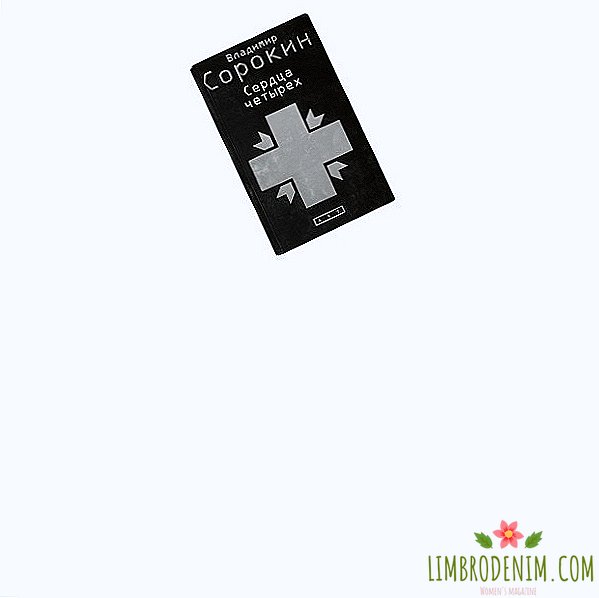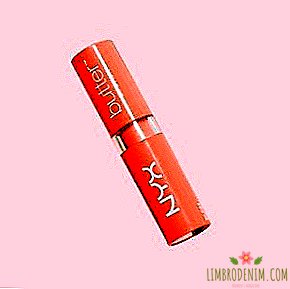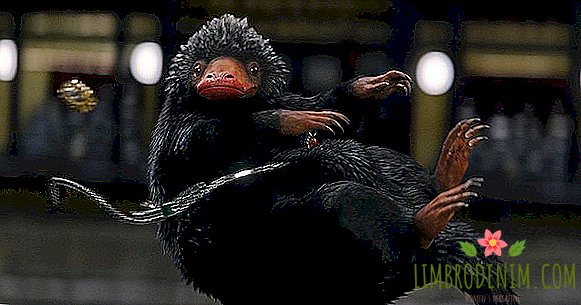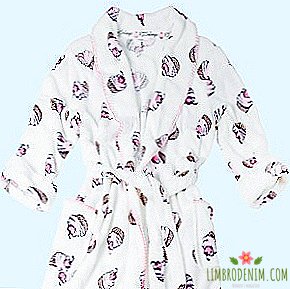Ekomarki, second-hand and swaps: Girls on conscious consumption
There is a twofold situation in the world: on the one hand, more and more people have become more attentive to purchasing clothes, refusing an endless string of unnecessary things, on the other - the mass market continues to produce collections twice a month and people are still ready to buy them.
And although the expression "conscious consumption" still forces someone to roll their eyes, there are people whose example proves that this is not at all scary. We talked with five heroines who embody the “theory of small deeds”. They do not support the industry associated with environmental pollution and harsh working conditions, but find vintage models, sew things themselves or barter them from friends.

 I began to be interested in vintage things late: many of my colleagues say that they have been walking in second-hand since childhood, but I didn’t have such a story. On the contrary, I was very happy when the mass market appeared. Benetton, Sasch delighted me. We had a moderately well-to-do family, but it never occurred to me that in the second you could find something cooler than in the store.
I began to be interested in vintage things late: many of my colleagues say that they have been walking in second-hand since childhood, but I didn’t have such a story. On the contrary, I was very happy when the mass market appeared. Benetton, Sasch delighted me. We had a moderately well-to-do family, but it never occurred to me that in the second you could find something cooler than in the store.
The first time I encountered the world of vintage clothes in Barcelona, and he really hooked me. The stage has begun, which almost everyone goes through when you pay attention only to very unusual, eccentric things. You think: "Why do I need a basic cotton shirt if I can buy the same in Zara?" And in the vintage shop you find an old Ralph Lauren jacket with epaulets and stars or a dress embroidered with beads. For example, my first purchase was the pants of a wild cut from Mexico and a dress with a crazy print in the spirit of Matisse. Then I had a turning point in my life: I left the work in the editorial office and went to art, I started to wear very strange things and rob my grandmother and mother’s wardrobe. I was twenty-three and I was looking for my own style.
After I left to live in Europe, and there already was really filled with seconds. I realized that you can buy absolutely everything in them: from unworn swimsuits to cotton bras with retrosiluet. It dawned on me in Berlin, and I decided that I wanted to do this with my own business. I brought back a small suitcase with very cool things: I was lucky to meet a collector who collected them all over Germany. In addition, the euro was such that it was possible to buy a mountain of everything.


Now Strogo for me is first of all an opportunity to offer people to dress in cool things of excellent quality and cut at the price of a mass market. For the project I buy mainly in Stockholm and Asia. I find myself everywhere. When I see all these cool models from Stockholm, I already feel sorry for keeping them. I continue to pick up the vintage from my mother and grandmother. I can go to the "flea" on a journey or in the second in front of the house. These are things that I can not hang in the showroom: my requirements are slightly lower than most people. I am not embarrassed by a small hole on a cashmere sweater, but in my experience, most still want clothes to be in perfect condition - even in second-hand clothes.
The most expensive thing I bought for myself was a Kenzo fluffy skirt for 80 euros from very thin cotton, just from that German collector. Of course, I don’t usually spend that much money. Now I go to COS, where I used to sweep everything, see a shirt for six thousand rubles and think: "I recently found a Burberry trench coat for this price, how can I buy it?" And the cheapest and most successful purchase is a leather jacket Versace for 100 rubles, found on the "flea" in Russia.
When I first started, we had a stream of girls from the art world: designers, artists, photographers. Now I see the most different people from completely different spheres. There are those who do not understand the value of things, are rude, and I, frankly, do not always have the patience to explain something. At the same time, the guys from the new generation "VKontakte" are almost all in the subject. Perhaps they do not always have money, but all this is interesting to them: for them to already buy a thing in the second is much better than in the mass market.

 I am a publisher by profession, but my hobby is no less important. I run a blog, write columns and books, in which I talk about the ethical lifestyle and experience of vegetarianism. I did not wake up one day with the thought: "Oh, I will wear vegan shoes, this is unusual." The transition to ethical cosmetics and vegan fashion was gradual: both money and a phased study of the topic played a role. The steps were: vegetarianism, eco-friendly products for the home, ethical cosmetics. After that, a natural question arose, what is the price of our beauty.
I am a publisher by profession, but my hobby is no less important. I run a blog, write columns and books, in which I talk about the ethical lifestyle and experience of vegetarianism. I did not wake up one day with the thought: "Oh, I will wear vegan shoes, this is unusual." The transition to ethical cosmetics and vegan fashion was gradual: both money and a phased study of the topic played a role. The steps were: vegetarianism, eco-friendly products for the home, ethical cosmetics. After that, a natural question arose, what is the price of our beauty.
I can no longer rejoice in the possession of things because of which someone in the world has suffered, especially since this is easy to avoid. I know enough about environmental pollution and the use of child labor in the production of penny T-shirts, which we rake dozens of in the same colors. Will we make it more beautiful? I do not think. Do we need everything we buy? Definitely not.

I love unusual things, and I like the suite for bright solutions and quality, but still I decided to switch to vegan-made clothes and shoes without cruelty and harm to the environment. I put up for sale with a dozen bags of Chanel, Dior, Louis Vuitton, Burberry leather coats and Michael Kors fur vests, and supported the ethical brands with the money. My path to an ethical lifestyle continues: over the past year I have not bought a single leather item, but I sometimes wear something from the existing one. This mainly concerns expensive shoes that are not so easy to take and replace.
By my example, I would like to show that in the 21st century, humanity can use new technologies. It is no longer necessary to run around with a spear and sew clothes from skins - although this would be more honest than containing nasty mass production and professional slaughterhouses. I myself do not wear vintage - I have a more modern style; I like the idea of recycled stuff more. At the same time, it is important for me that the clothes are not only ethical, but beautiful and of high quality: nothing will make me wear a pale robe, albeit from local organic nettles. My choice today is Stella McCartney, Kowtow, Beyond Skin, YCL Jewels.
Man today does not need all the clothes that he buys. In a situation where the eyes diverge from a huge choice, the principle can help to choose only the best, what is done with love. This is real luxury.

 Probably, it all started in childhood: I saw my mother sew and knit. She invented clothes for me, always took something out of purchases - I still remember the outfit for one of the matinees. Then she passed on her knowledge to me, and after the ninth grade I decided to go to college to design clothes. There was a good sense of learning, and what I sewed earlier helped me a lot: even then I went in clothes that I made for myself. Hope to learn how to make shoes in the future.
Probably, it all started in childhood: I saw my mother sew and knit. She invented clothes for me, always took something out of purchases - I still remember the outfit for one of the matinees. Then she passed on her knowledge to me, and after the ninth grade I decided to go to college to design clothes. There was a good sense of learning, and what I sewed earlier helped me a lot: even then I went in clothes that I made for myself. Hope to learn how to make shoes in the future.
I'm not interested in just coming to the store and buying ready-made clothes there. Now seventy percent of my wardrobe are the things that I sewed myself. Most of all I like to choose fabrics. I have several favorite places where I usually go for them: the set is different everywhere, and the materials vary greatly in price. It also happens that I buy a fabric not for a specific thing, but simply because I liked it: it can lie for a long time until the idea of what to do with it comes.


At fifteen, I sewed my first trousers and a sweater. From twenty-two I began to make bows completely, including outerwear; now sewing is an integral part of me. I am very sensitive to the things that I do for someone: it is important for me that everything should be of high quality, so the prototype I sew on myself, I walk in it, note the nuances and only then modify the model.
I have a lot of things in an unwrought condition due to the fact that individual orders take a lot of time. Probably, the sticking threads can already be called a distinctive feature of my style, although I sew pretty neatly - but I am not ashamed of them. Only mom doesn’t like it: she evaluates from a professional point of view and thinks that it is careless.

 I started to sew in the last years of school: there weren’t much shops at that time, and everyone bought at markets, but I didn’t like the way I looked in things from there. At home we had an old machine with two lines: straight and zigzag, - with its help I changed my mother's and father's things. After starting to find some kind of tissue from my grandmother. I was driven by the desire to do at least something with myself and my things — it seemed I could sew endlessly. At first it was hard: everything was torn, it was crooked, and when it began to turn out, I began to buy the material myself. After finishing school, my parents presented me with a cool Japanese machine, in which there were many different functions: it could sew both leather, and thick fabrics, and knitwear - I just could not move away from it.
I started to sew in the last years of school: there weren’t much shops at that time, and everyone bought at markets, but I didn’t like the way I looked in things from there. At home we had an old machine with two lines: straight and zigzag, - with its help I changed my mother's and father's things. After starting to find some kind of tissue from my grandmother. I was driven by the desire to do at least something with myself and my things — it seemed I could sew endlessly. At first it was hard: everything was torn, it was crooked, and when it began to turn out, I began to buy the material myself. After finishing school, my parents presented me with a cool Japanese machine, in which there were many different functions: it could sew both leather, and thick fabrics, and knitwear - I just could not move away from it.
Now I buy in stores at a minimum: underwear, leggings, slippers. Recently, I graduated from Andrei Zhakevich’s shoe courses and, perhaps, in the future, I will start making shoes. I do not like to go shopping - they only have a headache. I am a minimalist in clothes: I have about five things in use. If I like the model, I will wear it to the last, until it disintegrates to shreds. When I realize that I can no longer wear it, I give it to someone. Perhaps the most difficult thing was to sew a winter jacket with a sintepon - at least physically, because the thing is huge. Sometimes I sew for children, but rarely any specific things like a dress for a holiday. Anyway, they grow out of clothes very quickly.

I have a small brand for which I make accessories and toys. I haven’t had my wallet for a long time: at school I carried money in my pockets, and when Dad gave me his old leather jacket, I sewed my first prototype out of it. At some point, I realized that my friends constantly pay attention to him and ask where I took it. So I took the remnants of this jacket and put my wallets on to my friends. Then they were wanted by friends of friends, and I began to make them for sale.
I proceeded to the furniture when we moved into a one-room apartment. By that moment, I realized that I was pregnant with my second child, and living in four seemed to be something extreme in her. This apartment we got from grandparents and looked appropriate. I realized that I could not buy anything from the finished furniture, because there everything had to be done to meet our needs. I love to work with my hands, so I began to ennoble her. It all started with a mirror, then a chair; so, little by little, I did almost everything except the huge cabinets that were ordered in the workshop. For two years I went to this apartment as to work: I sawed and painted.
At the same time, I can hardly make custom furniture now. This experience was rather forced, and the work itself was very hard and exhausting. But, of course, I do not regret and, of course, it was worth it: when you do things with your own hands, you help not only yourself, but also the world around it.

 The first time I got on a swap, where everyone exchanged clothes for free, three years ago, he was satisfied with the wonderful Alice Taiga. It was a chamber event where everyone knew each other. There were few things: the sample was special, people very carefully approached the question. Many brought clothes with an eye to the fact that it suits a certain person. Now this is a great event for several dozen people. It’s great, but you don’t always have the time and mood to be in a big company, so we began to arrange our mini-swaps with friends.
The first time I got on a swap, where everyone exchanged clothes for free, three years ago, he was satisfied with the wonderful Alice Taiga. It was a chamber event where everyone knew each other. There were few things: the sample was special, people very carefully approached the question. Many brought clothes with an eye to the fact that it suits a certain person. Now this is a great event for several dozen people. It’s great, but you don’t always have the time and mood to be in a big company, so we began to arrange our mini-swaps with friends.
The first swap evening parties launched an important process: more and more people began to realize that changing clothes was normal. In addition, it is a separate girl's paradise: the unity there is felt especially strongly. You exit with a swap charged; perhaps many do not have this in regular stores. Unlike sellers, girls can always honestly tell you if you need a thing or not.


I like that I have a limited choice and that the thing comes to me by chance. Either I live with her, or not - then I just pass it on. I have a wardrobe: I don’t keep too much and I don’t grab everything on swaps. When I need a certain thing, I simply form a request in my head, and after a while she gets to me through a swap. It seems to me that this happens even faster than if I purposefully looked for it in stores. In this case, I have friends who can not go to swaps: they either do not have extra things, or they can only wear new things. I treat this with understanding, but even to them I can bring something from the swap with the words: "This is unconditionally yours, without options" - and they will happily take away.
I have girlfriends who go to swaps exclusively for rarities - strange, bright things, such come across very often. For example, people often buy something specifically for a party and put it on once. At one time I lived with a neighbor-stylist, who also went to swaps. Before her campaigns, I arranged an audit: very cool things, unfortunately, are easy to miss. One of the most memorable models that I have worn out is a faux fur coat from the limited collection H & M. I would never have paid attention to her in the store — I would have thought that I would not put it on because of the way she combines with my curly hair. As a result, she wore it all winter.
Now, if I spend, it is very rare, and only for really special things - these are found either on trips or from friends-designers. All the money that I used to spend on a package of clothes from the mass market, now I invest in one thing.
Editorial thanks the studioPHOTOPLAY for assistance in organizing the shooting.





